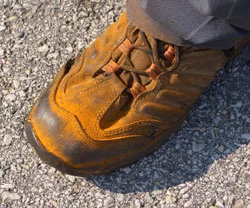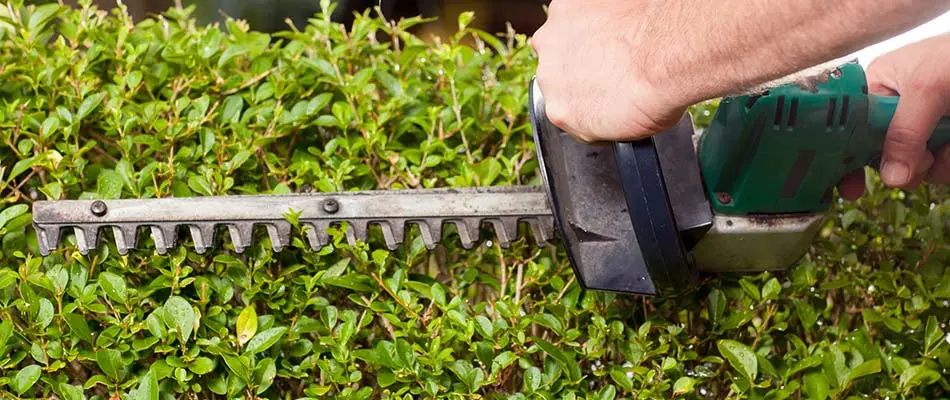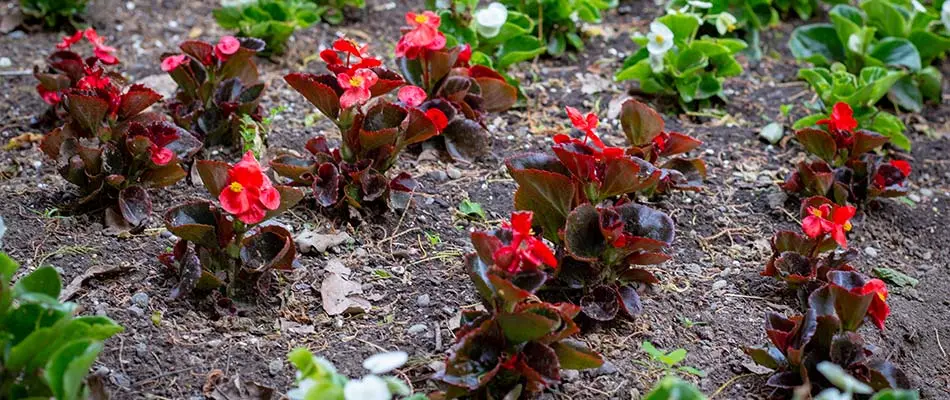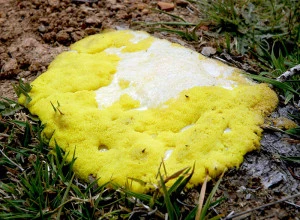
Our Blog
Use our blog as a resource of information pertaining to lawn and landscape maintenance information and services for your properties.

Use our blog as a resource of information pertaining to lawn and landscape maintenance information and services for your properties.
 Flower bulbs are easy to plant and easy to care for. Here is general information that applies to all spring-flowering bulbs. Spring-flowering bulbs MUST be planted in fall when soil temperatures are between 40-55 degrees F. I prefer to plant as late in the season as possible because it gives the critters that much less time to dig them up before the ground freezes. Once the ground freezes, the bulbs are safely locked into a vault of frozen soil until spring when they will abound with beautiful colors. Just remember, spring flowering bulbs MUST be planted before the onset of winter. Choosing a Site There are two key considerations when choosing a site for bulbs.
Flower bulbs are easy to plant and easy to care for. Here is general information that applies to all spring-flowering bulbs. Spring-flowering bulbs MUST be planted in fall when soil temperatures are between 40-55 degrees F. I prefer to plant as late in the season as possible because it gives the critters that much less time to dig them up before the ground freezes. Once the ground freezes, the bulbs are safely locked into a vault of frozen soil until spring when they will abound with beautiful colors. Just remember, spring flowering bulbs MUST be planted before the onset of winter. Choosing a Site There are two key considerations when choosing a site for bulbs.

Most bulbs need ample sunshine to bloom well next spring and to store up the energy required to flower in future springs. Many bulbs–including crocuses and bluebells–can be planted beneath deciduous trees; these bulbs are able to satisfy most of their light needs before the trees leaf out. (See each item we offer for specific light requirements.)
All bulbs need good drainage; never plant bulbs where water collects. The drainage of heavy clay soils may be improved by digging in organic matter such as compost or composted manure. How to Plant There are two principal ways of planting bulbs.
Excavate the area to be planted and loosen the soil in the bottom. Set the bulbs in the bed, following the spacing recommendations...
 Not surprising…our weather conditions have been prime for rust fungus to form on lawns this year. Most commonly, rust is noticed during periods of slow growth. Our lawns typically go dormant during the summer months due to the lack of rain and also heat. This summer is the first in a very long time that we have had regular rain fall through the entire summer months and also cool temperatures. For the most part, non-irrigated lawns have kept their lovely green color all season. Though, the rate of growth has slowed down.
Not surprising…our weather conditions have been prime for rust fungus to form on lawns this year. Most commonly, rust is noticed during periods of slow growth. Our lawns typically go dormant during the summer months due to the lack of rain and also heat. This summer is the first in a very long time that we have had regular rain fall through the entire summer months and also cool temperatures. For the most part, non-irrigated lawns have kept their lovely green color all season. Though, the rate of growth has slowed down.
Rust is noticed during periods of slow growth because the rust is not being physically removed by regular mowing at a fast rate as it would be if the lawn were growing rapidly. Therefore, the rust has an opportunity to proliferate on the slower growing blade of grass.
Once conditions are right for the grass to begin growing more rapidly, the rust ‘problem’ will mitigate itself without any additional inputs. Conditions can be related to weather or nutrients.
Some may advise that an application of fertilizer will take care of the rust problem. And while it is true that applying fertilizer will probably increase the rate of growth, applying fertilizer may not be the appropriate thing to do. If the soil is holding enough nutrients already, then these additional nutrients may just runoff and pollute our environment. Also, given that it is the middle of summer and weather...
Disease seen in some lawns
Earlier this week, we were called to a home in Pewaukee because of some suspicious looking dead patches. At first, we thought it was an overspray of roundup. Once we saw the area in person we soon realized that it was a fungal disease.
How can we tell the difference? With a fungal disease there are various distinct markings on the leaf blades and also if inspected early in the day we can often see mycelium (fuzzy stuff). Each sort of plant disease has very distinct characteristics in how they look either to the naked eye, or under a microscope.
What should be done? On a residential lawn, usually nothing. As soon as conditions change, the disease progression will stop. The damage is often very minor and the lawn will recover just fine on its own. One of the reasons why the damage is minor is because your lawn is created from several types of grass. Often a disease only attacks one type and the others are unscathed.
In other scenarios, such as a golf course, where there are monocultures of grasses planted, pristine conditions are demanded and because of the way the turf is maintained overall, the application of a fungicide may be necessary to halt its progression.
For a home lawn situation however, it is not prudent to apply fungicides for a problem that is really quite temporary, likely to pass with a change in weather, and not cause significant damage. If there is...
2012 Drought = Dead or stressed plants
Yep, we are certainly seeing the effects of the drought last year. Established and new plants alike, many are dead or severely stressed this year.
Obviously, if it is a dead plant—it needs to be replaced. Have you noticed a dead plant that we have not talked to you about? Please shoot us an e-mail so we can get this replacement on our list.
Seemingly healthy plants last summer have begun to show signs of stress this year. Most noted on shrubs and trees. Signs to be aware of include dieback, prolific flowering or seed production (more than normal), increased number of basal shoots (suckers), off color or early fall color on leaves. To reverse the damage done from the drought it is important to pamper your stressed plants.
Three main ways to do this includes monitoring moisture, fertilizer needs, and good pruning practices. For shrubs, I feel that stressed plants will need to be pampered for about 2 years. Trees may not even be showing all of the long term affects of such a severe drought, therefore I recommend pampering ALL trees for the next 5 years. I encourage you to contact us with any concerns you have about the long term health of your trees, or contact our preferred certified arborist Dave at M&M Tree Service directly at 414-355-3420.
What about all this rain!?
Too little, too much….either can be devastating! There is NOTHING we can do to control the weather but we can react to the effects that it has on our landscapes. To do this most effectively and efficiently requires a partnership between you and Beautiful Blooms. Please be observant when enjoying your landscapes and pass any notes/concerns on to us—we will respond as best that we are able to.
Things to observe, specifically—

Pruning and Shrub Shaping
The spring flowering shrubs and Yew shrubs are ready for a trim! We began shaping and trimming last week and will continue working through all properties until complete….and then we’ll start all over again. J For the entire month of July, there is extra time added to all of our regular maintenance visits to accommodate the additional work.
The delayed spring weather, ample amounts of rain and periodic HOT days have caused nature to be slightly off kilter this year. My general assessment right now is that the normal sequence/progression of spring (forsythia bloom!) and early summer (shrub roses in full bloom!) that spans the time from about April 15-June 1st was shifted and consolidated to May 9-June 20th. In addition to the natural progression of spring was the great emergence of 2013—first tree leaves fully emerged on May 19th (about 3 weeks later than normal) and just 4 weeks later the shrubs are in need of trimming. Normally, there is a 6 week or more time frame between first full leaf emergence and trimming/shaping. Yikes!
Normally, we begin trimming shrubs the first week of June. By the first week of June most spring flowering shrubs have nearly completed their flowering, not this year though, the delayed spring also delayed flowering on many shrubs. Unfortunately—at the same time leaf/shoot growth was/is in full swing. For example, while lilacs...
Welcome, new clients! And ‘big picture’ questions for everyone—
Whether this is your first season with Beautiful Blooms or your 8th, what is your initial impression this season? This is important to us because as the cliché goes—this is the impression that will last the longest.
Is this your first experience working with a landscape maintenance contractor? Are we meeting your expectations? Have you worked with other contractors in the past—how do we compare? Is there something that you miss about your past contractor that you wish we did or did better?
Do you appreciate the level of communication that we provide? Is it too much, do you want more, do you want it to be done differently?
How else can we serve you? Do you have any questions or concerns about Beautiful Blooms and the services we are providing to you?
These are hugely important questions for me to ask and get feedback from you on. Your honest feedback is critical to the future success of our company. We wish to provide you with services that leave you feeling delighted and if we are not living up to that expectation we certainly want to know about it so we can correct the issue at once.
Please take a moment and call or e-mail anything that is of concern to you….or anything that we are doing a great job of. ALL of your responses will be used to improve our company, our entire team...

Annual pricing is listed below.
“There is likely frost until the last full moon in May.” Hmmmm….that goes hand in hand with the sort of weather we are having because the last (only) full moon in May is May 24, 2013. Anything less than 50 degrees at night and injury to summer annuals is nearly guaranteed. Here is more interesting information. I’m sharing this with you because the earliest we are planning to start annual planting is the week of May 20th—and will likely conclude the week of June 3rd . All dependent on weather of course. According to the predicted last frost, these dates may be pushed back a week.
While that is a few weeks away, our planning and ordering has begun. I invite you to communicate directly with Mary Beth as she is the one making these arrangements. Her e-mail address is Marybeth@beautifulbloomslandscape.com. To be sure we are covering all of your container planting needs, please answer the following questions. If you have anything specific you would like to add, of course please do. As a quick reference, I’ve included our pricing information for annual/twig color at the end of this e-mail, there are more options/information than what was originally printed on your earlier contract. If you have any questions or concerns about annual planting, please contact Mary Beth. Thank you!
**cut and paste these ...
“Dog Vomit Fungus”-Slime Mold
 In spring, when you have cleaned the yard of all its winter debris and laid down new hardwood mulch on all of your beds. Some time has passed and as you walk around enjoying your season-ready yard, you notice something sitting on top of your mulch! It is not very big, but it is very ugly, and quite frankly, it looks like your dog has puked up something that didn’t quite agree with him. What you are looking at is called, in gardening circles, Dog Vomit Fungus (slime mold). No really, that’s what it is called and it is more common that you’d think! Typically, spring weather conditions are perfect for this nasty looking fungus to appear in your mulched landscape beds.
In spring, when you have cleaned the yard of all its winter debris and laid down new hardwood mulch on all of your beds. Some time has passed and as you walk around enjoying your season-ready yard, you notice something sitting on top of your mulch! It is not very big, but it is very ugly, and quite frankly, it looks like your dog has puked up something that didn’t quite agree with him. What you are looking at is called, in gardening circles, Dog Vomit Fungus (slime mold). No really, that’s what it is called and it is more common that you’d think! Typically, spring weather conditions are perfect for this nasty looking fungus to appear in your mulched landscape beds.
 Why is it showing up in JULY? Lately, the weather has been very similar to our spring time conditions, cool and damp.
Why is it showing up in JULY? Lately, the weather has been very similar to our spring time conditions, cool and damp.
We have been getting calls reporting a strange slimy mess in landscape beds- almost like someone threw up in their gardens!!! It is a type of mushroom? Is it going to harm my shrubs or other landscape plant material?
Let me ease your concerns…
This isn’t a mushroom at all. It is a mold- a slime mold! It is actually more closely related to a single-celled organism. Slime mold has 2 life stages; First, “plasmodium” stage- it is just like a huge amoeba that creeps and moves like a blob over dead wood (including mulch) and other materials, engulfing,...
Just complete the form below to get a pricing quote.
